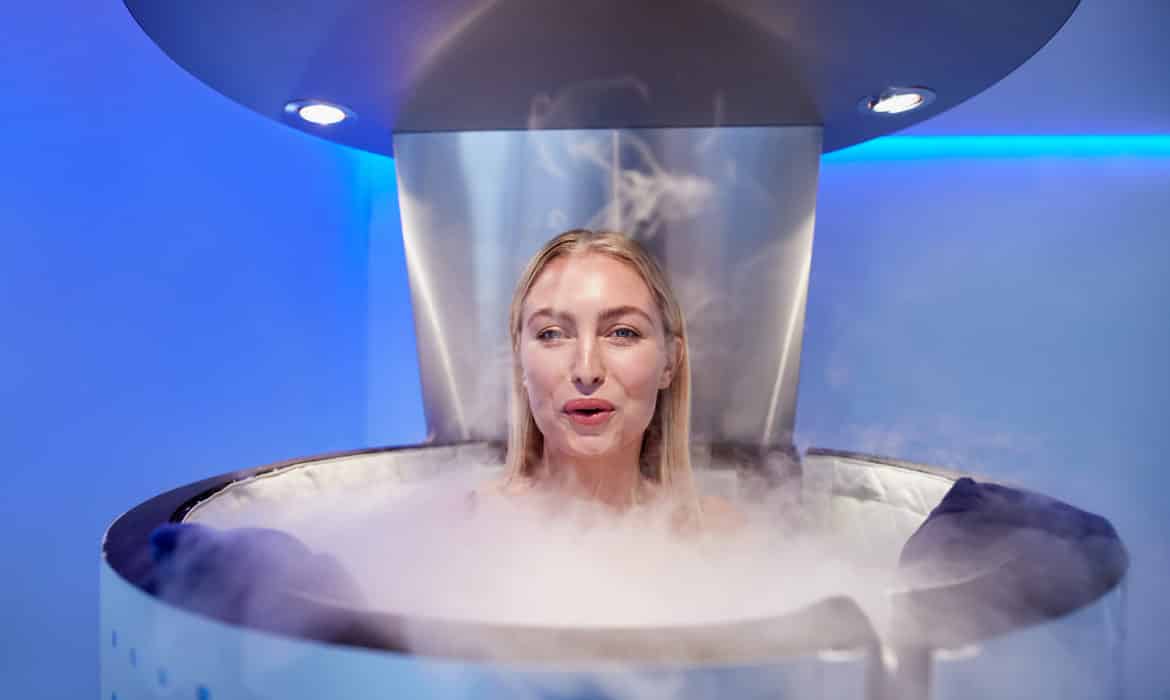As we know all too well, it can get pretty cold in Chicago. But some Chicagoans seek even colder temperatures, paying to stand in their shorts for three minutes in temperatures as low as 300 degrees below zero. They’re doing so for the potential healing purposes of whole-body cryotherapy.
Whole-body cryotherapy is a therapeutic technique that exposes people to extremely cold temperatures for several minutes to possibly aid in muscle recovery. Think health spa more than a doctor’s office.
The Food and Drug Administration (FDA) has not approved whole-body cryotherapy for the treatment of any medical conditions. Plus, FDA representatives have said they’ve found little evidence about its safety or efficacy in treating the conditions that it’s being promoted for. While physicians have used targeted cryotherapy for years to freeze off things like warts or cancerous tissue, whole-body cryotherapy is a different process. This treatment exposes your whole body to freezing temperatures in a chamber for a brief period of time to cause blood vessels to constrict and possibly limit inflammation.
Whole-body cryotherapy was developed in the 1970s as an alternative to drug therapy for the treatment of rheumatoid arthritis, says Glenn Sieverson, owner of Andersonville Cryotherapy and Athletic Recovery Center. “The therapy keys in on resolving inflammation,” he says.
Think about how people might use ice packs to manage soreness or an ice bath to immerse themselves in cold water following a high-intensity workout.
In whole-body cryotherapy, though, cold temperatures cause blood vessels to constrict blood flow to the extremities and direct blood to the internal organs, practitioners say. Then, when the treatment ends, the blood vessels widen and relax, and blood flow resumes.
“Whole-body cryotherapy causes vasoconstriction — [constricting] blood from the peripheral tissues toward your core to maintain your heart, lungs, and brain,” Sieverson says. “When the client steps out of the cryo chamber, the oxygenated blood returns to the peripheral tissues with an amazing anti-inflammatory and muscle recovery effect.” Sieverson says the treatment may also provide a mood-boosting endorphin boost, as the oxygenated blood flows back into the body.
A small study of 56 adults with depression, published in Frontiers in Psychiatry in 2020, found that whole-body cryotherapy can reduce mental health deterioration and be beneficial for well-being and quality of life. The FDA, however, says there’s insufficient information for cryotherapy’s mood-boosting and other health claims.
Chicagoan Jessica McCaskill, a two-weight world champion boxer, incorporates cryotherapy into her training. Already familiar with ice baths, McCaskill wanted to try cryotherapy when she noticed elite athletes using it.
With three workouts a day, McCaskill says cryotherapy has been instrumental in her progress. “I mostly feel like I have new legs after a cryo session,” she says. “It’s quick, it replenishes your body, and it keeps you intact for hard training.”
Cryotherapy isn’t only for athletes and fitness buffs, though. “People with any kind of chronic pain — back, knee, elbow — see us regularly,” Sieverson says. “We also see a lot of post-surgical clients, especially knee and hip replacement, looking to quickly reduce inflammation after their physical therapy appointments when rehabbing.” Check with your doctor before starting cryotherapy, especially if you’re doing it instead of established treatment options, the FDA says.
Vivek Cherian, MD, an internal medicine physician at AMITA Health in Elk Grove Village, recommends that individuals consult their physician prior to starting any new treatment, including whole-body cryotherapy.
“The efficacy of cryotherapy is difficult to comment on, as there is some research that supports the claims that cryotherapy can offer health benefits, but the supporting data is largely anecdotal,” Cherian says.
“As for the potential risks of cryotherapy, it can present the greatest risk to those suffering from diabetes or any other ailment that affects the nerves,” he says. People with heart issues, uncontrolled high blood pressure, or nerve issues or people who are pregnant should avoid whole-body cryotherapy, he adds. People with impaired circulation may have a greater risk of tissue damage.
Some people come to the cryo chamber nearly every day, says Eric Anderson, CEO of CryoLuxe, which has five locations throughout Chicagoland. “It’s like their morning coffee. When you get out, you get a burst of energy.”
While some people may be tempted to put on their parkas and mittens for a session, Anderson says most women wear shorts and a sports bra, and men usually wear shorts. Sessions last for up to three minutes, but you can exit the booth at any time. Single, three-minute sessions typically cost $60.
Whole-body cryotherapy is increasing in popularity among athletes, weekend warriors, and nonathletes. But it is an extreme treatment that’s not FDA-approved, so check with your doctor first to make sure it’s safe for you before you start your deep freeze.













